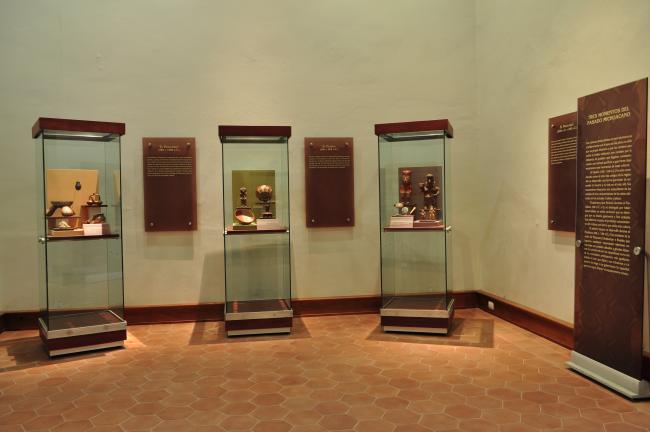
Ancient Michoacán (2000 BCE–1521 CE)
Sala
This section offers a brief overview of the cultural significance of different periods in ancient Michoacán: the Formative or Preclassic period (3000 BCE–200 CE), the Classic period (200–900 CE), and the Postclassic period (900–1500 CE).
Three Periods in Michoacán’s Past
The cultures that flourished in this region evolved over time, shaped not only by their own internal dynamics or environmental changes, but also by the constant arrival of other peoples—sometimes peaceful, sometimes warlike. These galleries explore three key periods in the cultural history of the region.
The Preclassic (3000 BCE–200 CE)
The cultural development of western Mexico began during the Formative or Preclassic period. These early agricultural societies, which supported permanent settlements, built villages and ceremonial centers, buried their dead, and developed complex ceramic styles and techniques. Notable examples include El Opeño, the Capacha culture in Colima, and, a bit later, Chupícuaro. There is evidence of interaction between western cultures and others such as Tlatilco in the Central Highlands, as well as with peoples from the Caribbean and even South America.
The Classic Period (200–900 CE)
During the Classic period, while great cities thrived across Mesoamerica, western Mexico retained its village-based society and ceremonial centers, although with some emerging unifying tendencies. Zacapu briefly shared in the prestige of Teotihuacan’s rise. Cultural ties with central Mexico are well documented, and one of the most significant technological advancements of the time was the development of metallurgy.
The Postclassic Period (900–1500 CE)
The Postclassic in western Mexico was marked by political instability and major population movements. This period saw improved techniques in mineral extraction and metal alloy production. Trade routes shifted to connect the west with newly dominant centers of power. Formerly autonomous communities united under the expansionist Tarascan state, which was centered in the Lake Pátzcuaro basin. This polity successfully resisted repeated attempts at incursion by the Mexica (Aztecs).


